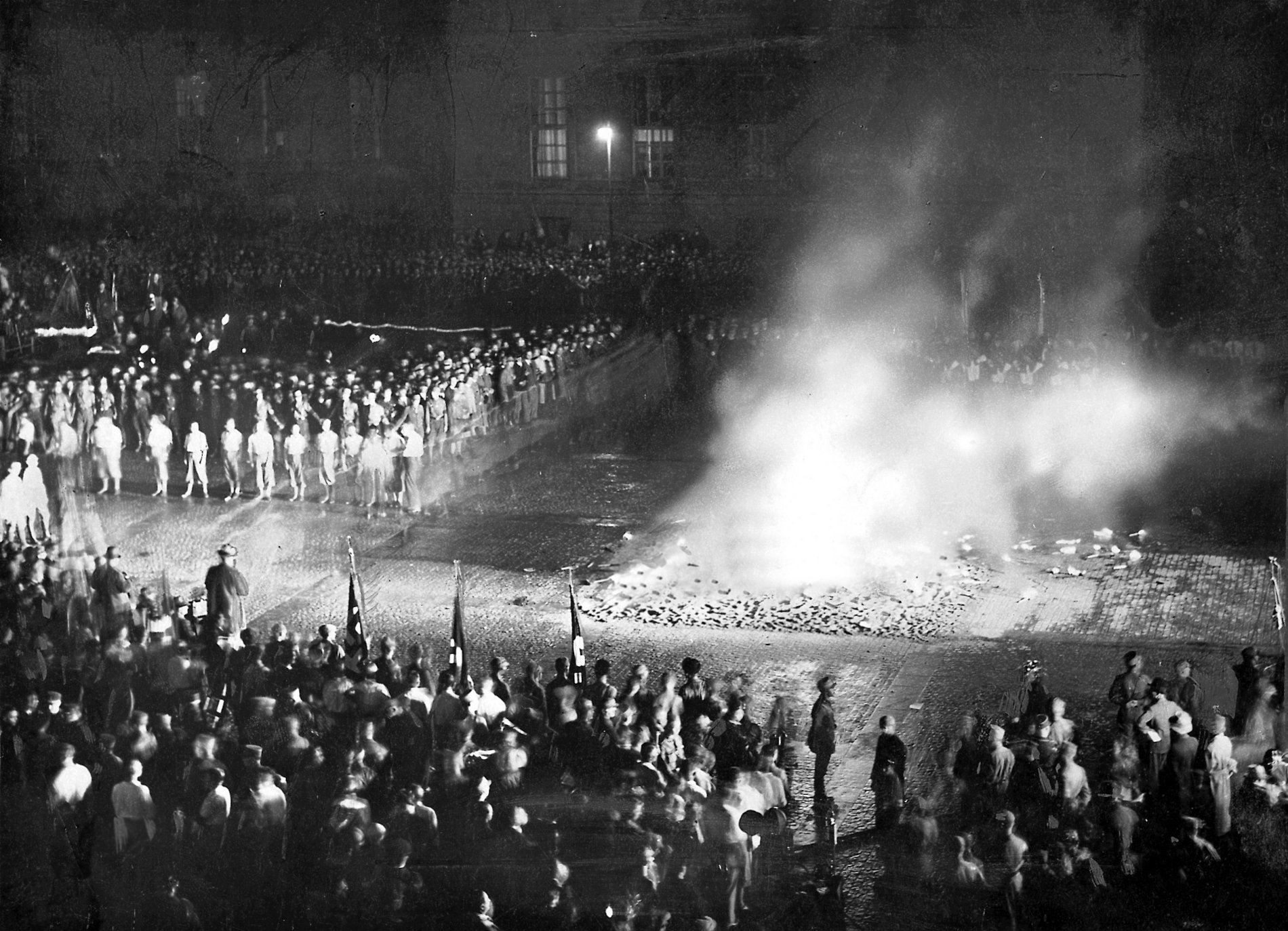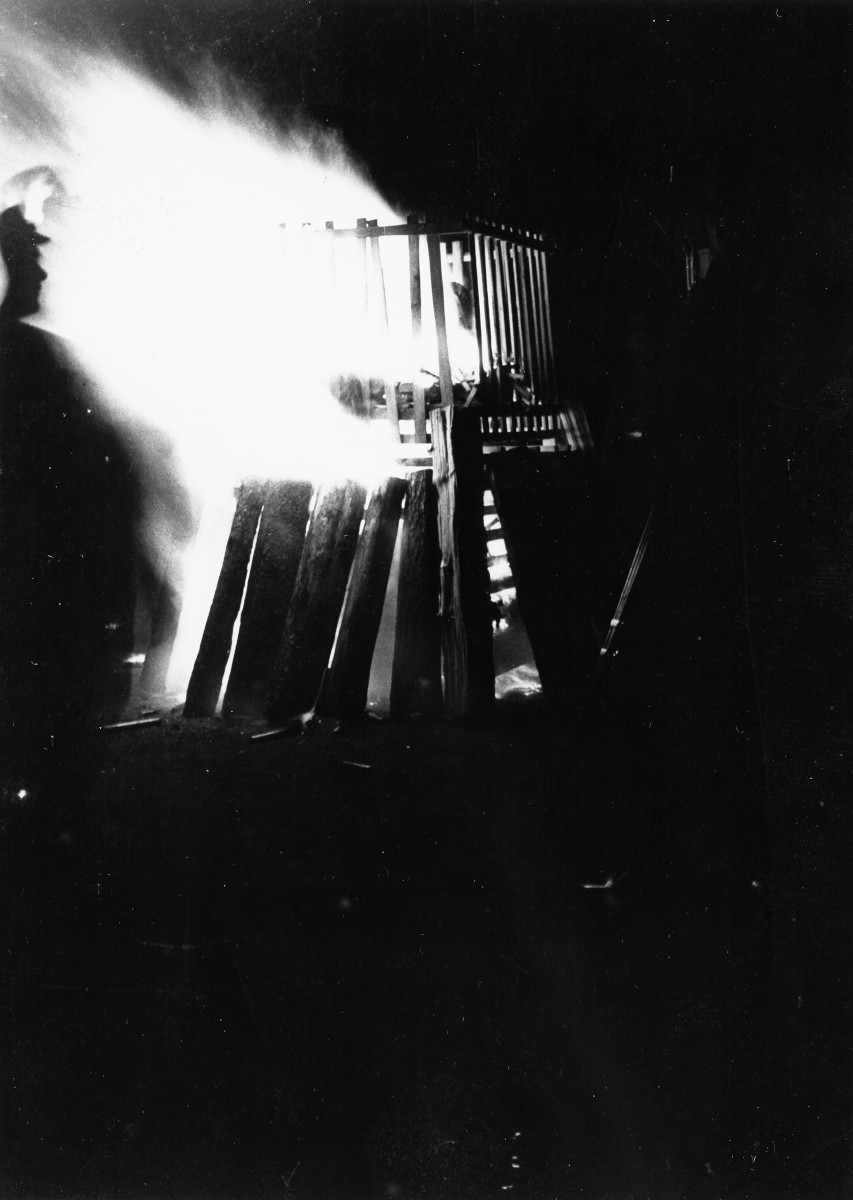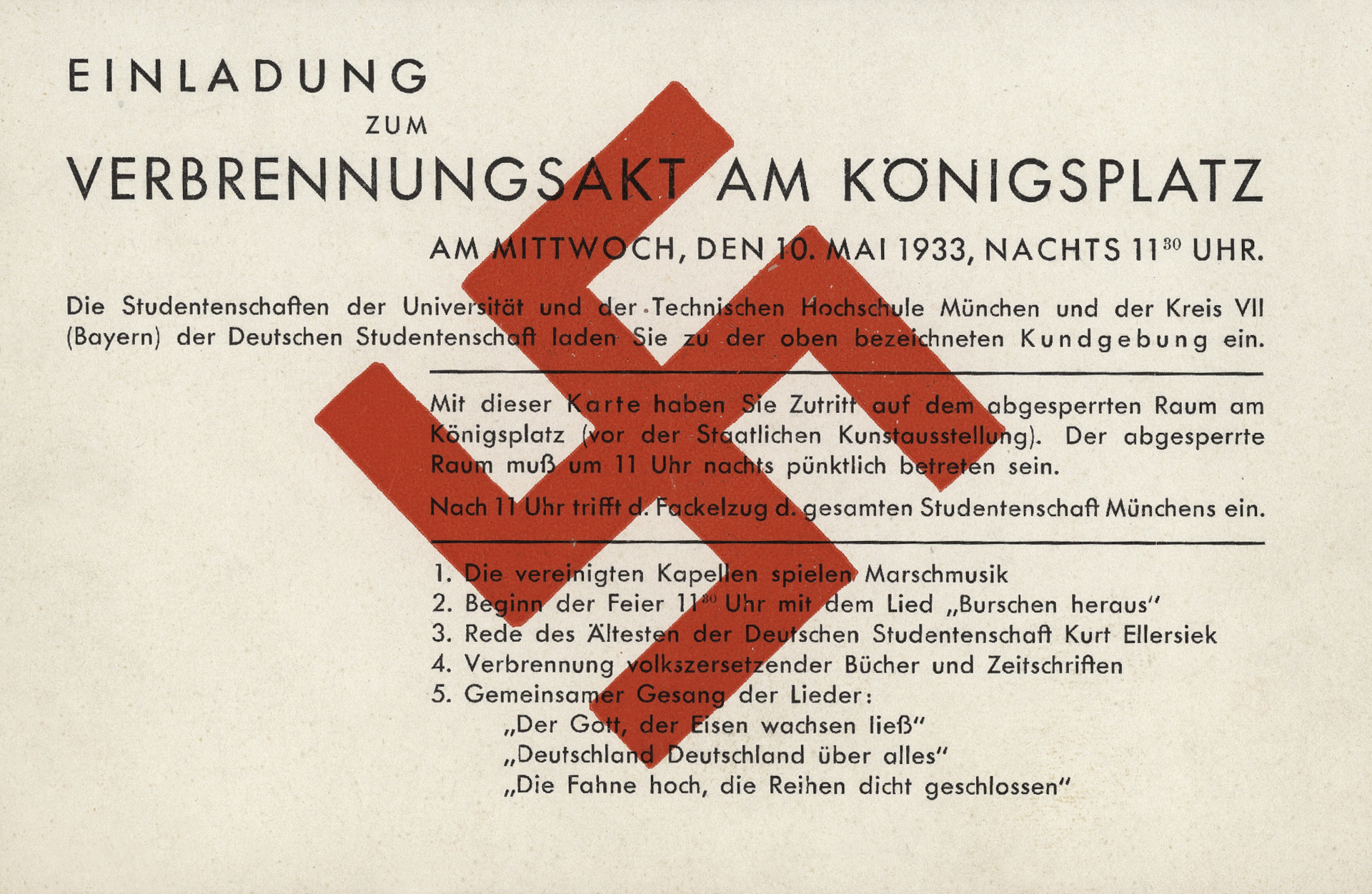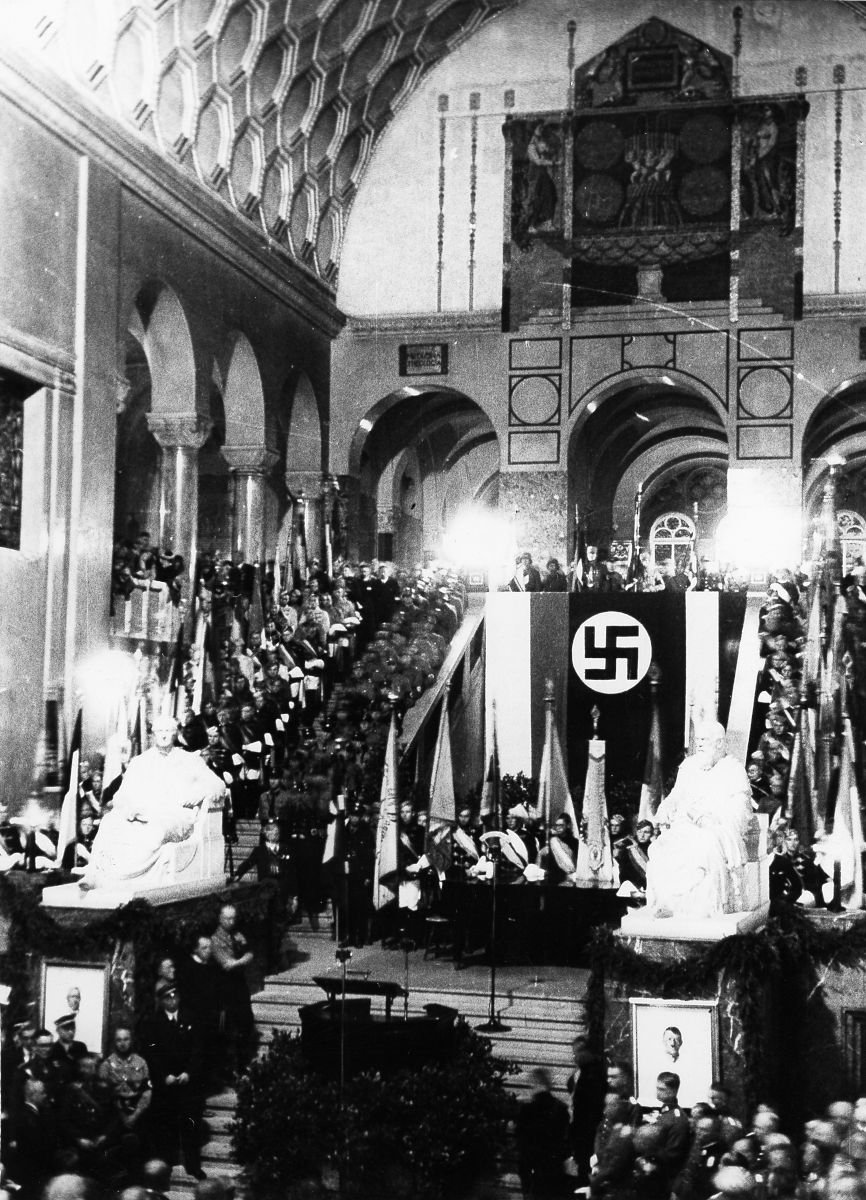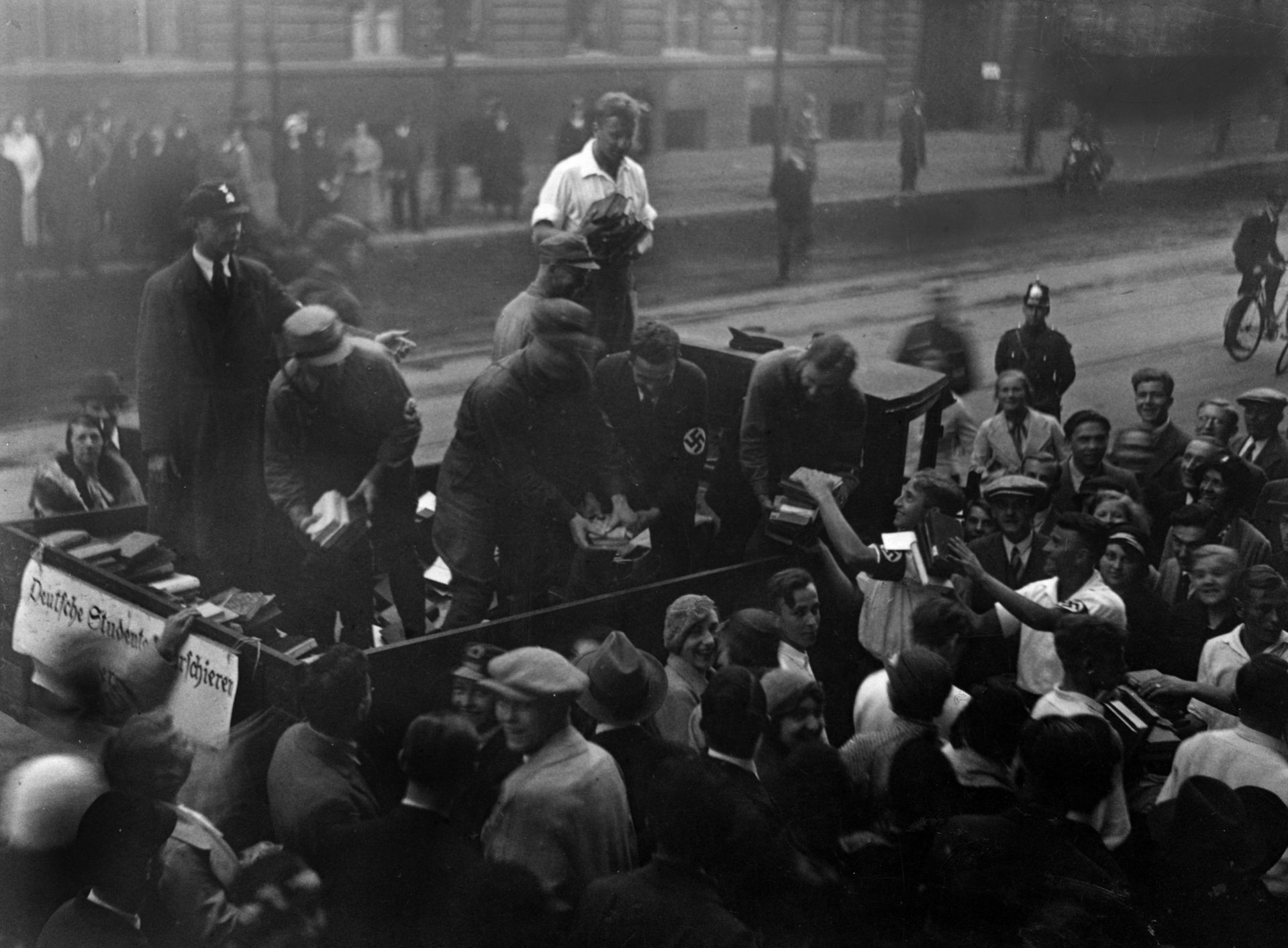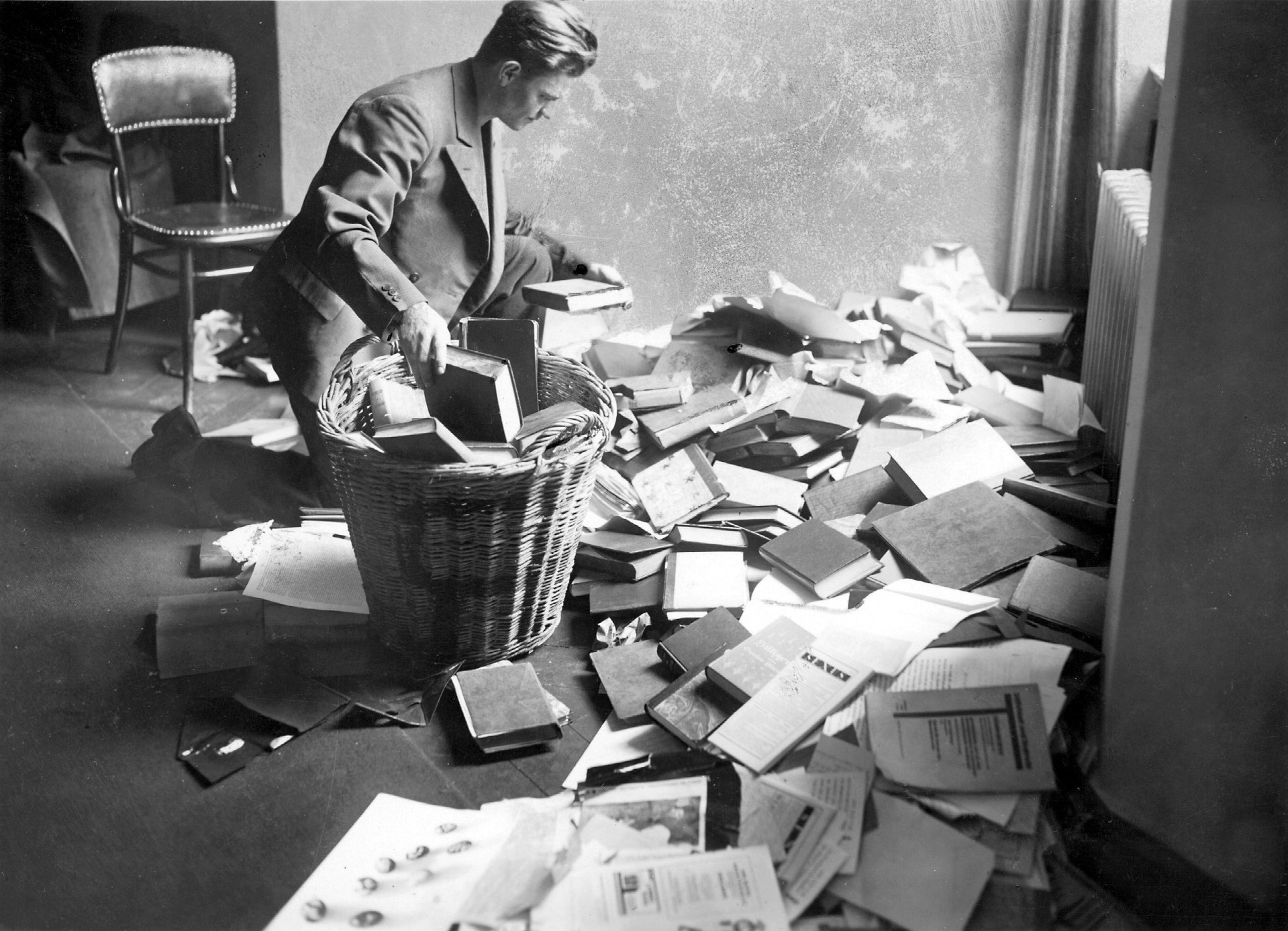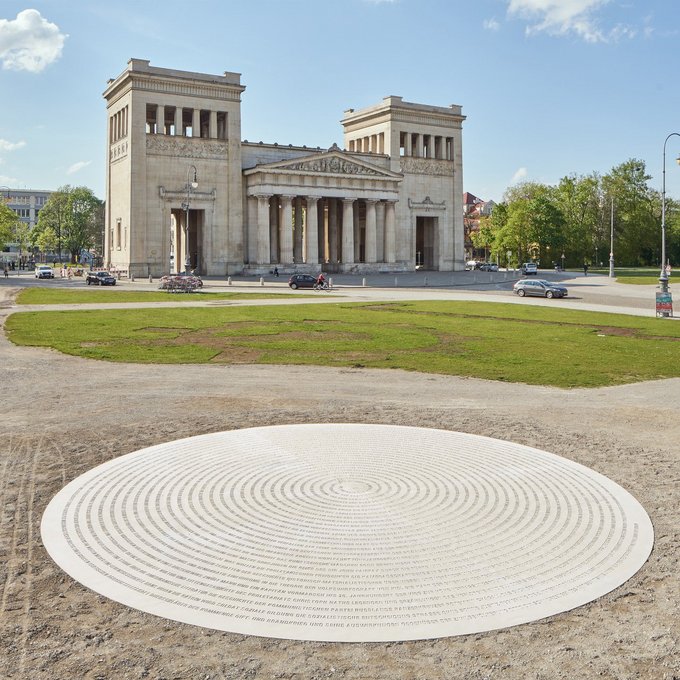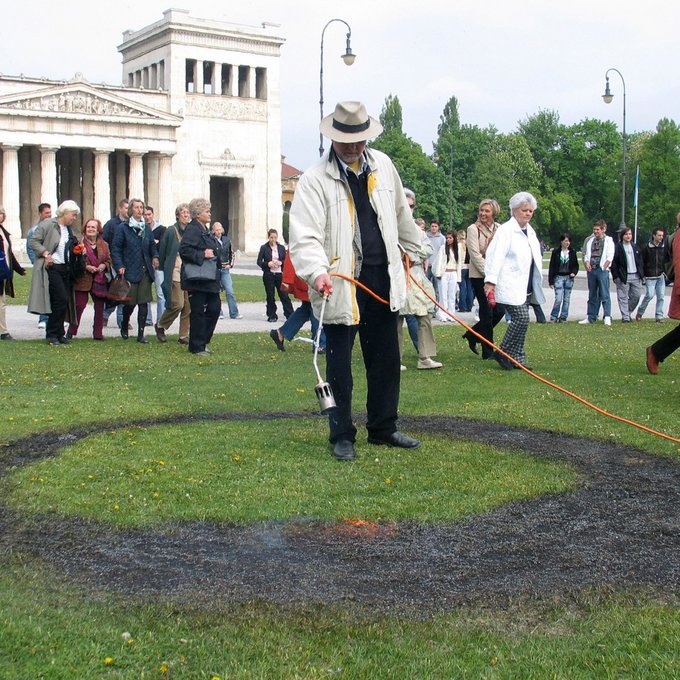The destruction of art and culture under the Nazis
The land of “poets and thinkers,” as Germany has traditionally been known, became the scene of acts of cultural barbarity on the night of May 10, 1933. In twenty-two German cities, tens of thousands of people marched through the streets shouting slogans, singing songs, and gathering at central locations. Surrounded by on-lookers, they tossed hundreds of books and writings onto blazing bonfires, in some places chanting so-called fire slogans as they did so. These were designed to give this ignominious campaign a ritualistic and celebratory character. The books burned were the works of pacifist, Jewish, and Marxist authors, some of them famous, such as Lion Feuchtwanger, Rosa Luxemburg, or Erich Maria Remarque, others who are scarcely known today, such as the German-Hungarian writer Maria Leitner.
The book burnings were planned and staged by the Nazis as a propaganda spectacle and were broadcast live on the radio. The message to Germany and the rest of the world was loud and clear: the coming to power of the Nazi regime marked the beginning of a new cultural era. The “depraved” culture of the Weimar Republic was to be a thing of the past. Although Reich Propaganda Minister Joseph Goebbels addressed the event on Opernplatz in Berlin, the campaign was not directed by the Party leadership. The main actors were young students led by the Nazi-dominated German Students’ Union (Deutsche Studentenschaft).


